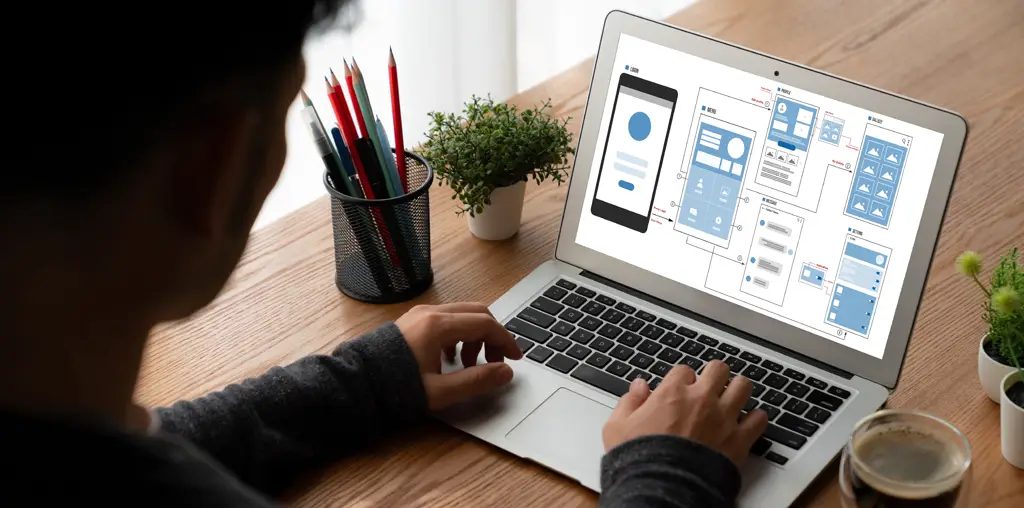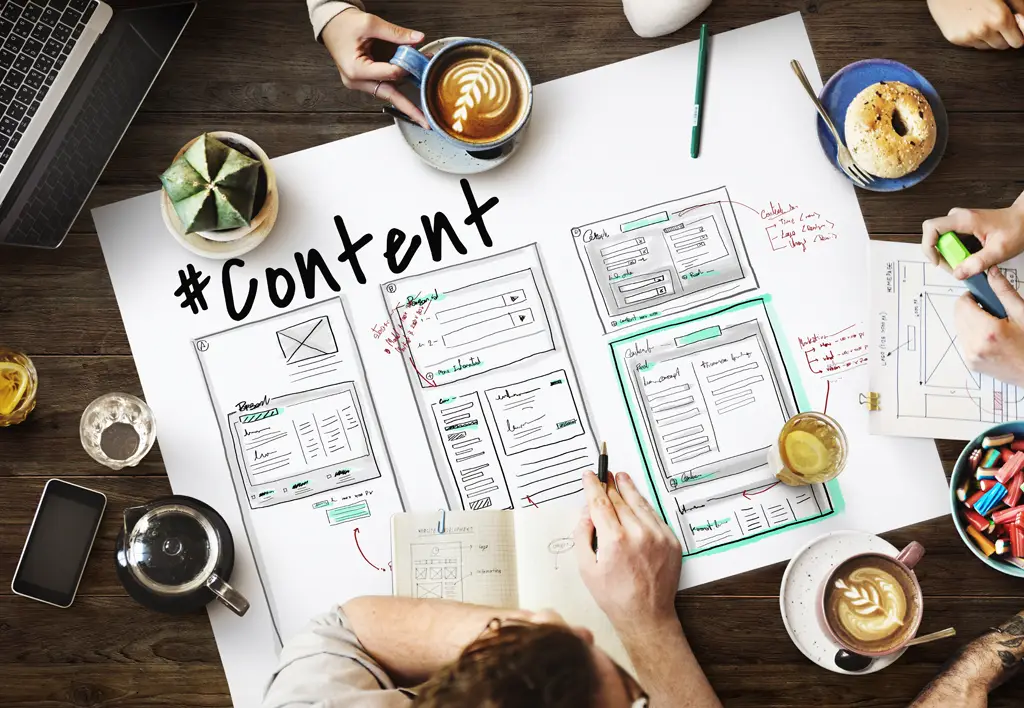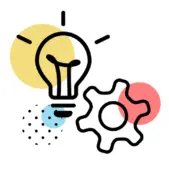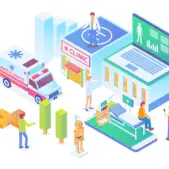In today’s digital age, a website is much more than just a collection of static pages; it’s a dynamic platform that often encompasses interactive web applications, content management systems, and various digital tools that engage users and drive business outcomes. Whether it’s a traditional website or a sophisticated web app, your online presence serves as the first point of contact with potential customers, acting as a virtual storefront that showcases your products, services, and brand identity. However, as technology and user preferences evolve, even the most well-crafted websites and web apps can become outdated and ineffective, necessitating a redesign.
A well-executed website redesign—whether for a traditional site or a web app—can significantly impact your online presence and overall success. By updating the design, functionality, and user experience, you can improve your ability to attract and retain customers, enhance lead generation, and ultimately drive revenue growth.
In an increasingly competitive digital landscape, a strategic website redesign can be the difference between standing out and being overlooked. Here, we explore the key benefits of a website redesign and provide practical guidance for businesses that want to maximize their online impact.

Why Your Website Needs a Redesign
A website redesign is more than a new visual design for your site. It also involves a comprehensive overhaul of the information architecture, navigation, content, and underlying technology. Specifically, a website redesign can help you:
Stay Competitive
A website that looks dated or fails to meet modern design and functionality standards can make your business seem behind the curve. This undermines trust and credibility with potential customers.
A strategically-timed website redesign allows you to keep pace with industry trends. You can also incorporate the latest best practices to ensure your online presence remains fresh, engaging, and ahead of the competition.
Improve User Experience
Customers expect intuitive navigation, fast load times, mobile responsiveness, and seamless functionality across all devices. A redesign lets you optimize the user experience (UX) so it’s easier for visitors to find information, browse products, and complete purchases.
By addressing pain points and enhancing the overall experience, you can increase engagement, reduce bounce rates, and drive more successful outcomes.
Adapt to Changing Technologies
As new technologies emerge, such as AI and personalization engines, augmented reality, and innovative eCommerce features, a website redesign enables you to future-proof your online presence. Incorporate these advancements to enhance the user experience and position your business as an industry leader. In doing so, you showcase your commitment to innovation and to meeting the changing needs of your customers.
UpTop Perspective
A website should be refreshed every 3 to 5 years to keep it modern and relevant for your customers. With technology advancing so quickly, it’s important to stay on top of the trends and emerging techs, then demonstrating where and how your users/customers can leverage them.
Boost Search Engine Optimization
Search engine algorithms are constantly evolving, and outdated websites may struggle to maintain high rankings. A well-executed website redesign can address technical search engine optimization (SEO) issues. It improves content organization and ensures the site is optimized for the latest search engine best practices. This can lead to increased visibility, higher traffic, and more opportunities to convert potential customers.
Strengthen Brand Identity
Your website is often the primary representation of your brand online. A redesign is an opportunity to align your digital presence with your company’s visual identity, messaging, and values.
It allows you to create a cohesive and stand-out experience for your audience. This can help build brand recognition, foster trust, and differentiate you from competitors.
Improve Conversion Rates
A well-designed, user-friendly website can have a significant impact on conversion rates. Use the redesign to address pain points, streamline the customer journey, and create a more compelling online experience. As a result, you’ll see increased lead generation, higher sales, and better overall business performance.
Website Redesign Examples
So, how would a website redesign apply to your business? At UpTop we’ve helped numerous B2B companies improve the user experience, streamline internal processes, and increase overall results. For instance:
F5 (f5.com)
With a shift in their buyer journeys, F5 needed to update their main marketing website by improving user flows and navigation, and modernizing the UI to reflect their latest brand refresh.
We conducted major research activities, such as stakeholder and user interviews, journey mapping, and alignment workshops. To provide a phased approach, our team executed a North Star envisioning and worked backwards from there to a minimum viable product (MVP).
Strategic changes focused on improving navigation and discoverability. The redesign of both the mobile and desktop website experience led to increased results across the board for F5. Read the case study.
Archbright (Mozzo HR platform)
Archbright’s online platform suffered from low engagement, poor user experience, and inefficient navigation. It also required a modern face lift.

We systematically redesigned each section of the Mozzo platform, and rebuilt the design system component by component. The changes yielded highly positive feedback after releasing to their customers.
Logitix
Logitix, a B2B, end-to-end ticket pricing and distribution platform, offered an outdated user experience and lacked mobile functionality.
Our team conducted stakeholder and user interviews, journey mapping, and alignment workshops. For more than two years now, UpTop has operated as their external product design and front-end and mobile app development team, redesigning, building, and releasing select modules across their web platform to their customers, increasing productivity, engagement, and customer satisfaction.
Key Elements of a Website Redesign
To determine whether your website needs a redesign, it’s necessary to evaluate the current performance, technology, and user experience. For instance, a refresh requires less in-depth changes. It’s usually adequate if you’re meeting key performance indicators (KPIs) and the underlying technology is still effective.
The focus of a refresh is often to update the look and feel, align the site with current branding, or make incremental improvements to navigation and interaction. That is, without a complete overhaul of the underlying systems.
A redesign, on the other hand, is necessary when there are significant functional or UX issues that impede business goals. If the current digital framework is outdated and limits growth, a website redesign can be a game-changer for your business.
Of course, this involves more comprehensive changes. You might update the overall design, improve UI and UX, and upgrade the back-end technology to support new functionalities and performance.
The key elements of a successful website redesign typically include (but are not limited to):
UX
At the heart of any effective website redesign is a focus on user experience. It’s essential to conduct thorough user research, map customer journeys, and design intuitive navigation, information architecture, and interaction flows.
Visual Design
The visual design of a website shapes both brand perception and user engagement. A website redesign is an opportunity to align the online presence with your company’s brand identity through modern aesthetics, typography, color palettes, and imagery. A visually appealing and cohesive design can build trust, convey professionalism, and create a memorable impression.
Content Strategy
A redesign enables you to reevaluate your content strategy. You might create new and engaging content, reorganize the information architecture, and optimize content for search engine visibility. With valuable, relevant, and well-structured content, you can improve UX, increase engagement time, and drive conversions.
Mobile Optimization
A website redesign should incorporate a mobile-friendly layout, fast load times, and intuitive touch-based interactions. This not only enhances the user experience but also aligns with search engine algorithms that prioritize mobile-optimized websites.

Technical Infrastructure
The underlying technical infrastructure of a website plays a critical role in its performance, security, and scalability. A redesign should address any technical issues, such as outdated content management systems, slow loading times, or security vulnerabilities. This improves website stability, speed, and overall functionality.
SEO
To integrate SEO best practices into the website redesign process, you might optimize page titles, meta descriptions, image alt text, and schema markup. You should also ensure the website’s architecture and content align with search engine algorithms.
The Cost of a Website Redesign: Top Things To Consider
The cost of a website redesign can vary significantly depending on several factors:
Website Redesign Scope and Complexity
The size and complexity of the website are primary drivers of the cost. Larger websites with more pages, features, and functionality will generally require a more extensive and expensive redesign process than smaller, simpler websites.
Design and Development Approach
A custom, bespoke design and development process will typically be more expensive than using pre-built templates or a content management system (CMS) platform. The level of interactivity, animations, and advanced features included in the redesign will also affect the overall cost.
Content Migration
The amount of existing content that must be migrated to the new site can add to the project’s complexity and cost. Also, factor in the time and effort required to review, organize, and transfer content to the new website.
Third-Party Integrations
Adding third-party tools, such as eCommerce platforms, customer relationship management (CRM) systems, or marketing automation software, can make the redesign project more costly and complex.
Ongoing Maintenance and Support
You may also need to budget for ongoing maintenance, security updates, and support to ensure the website remains functional and up to date. Consider these recurring costs as part of the overall investment.
Service Provider Type and Rate Inclusions
Agencies, freelancers, and in-house teams may have varying rates and include different levels of service, such as strategy, design, development, and ongoing support.
UpTop Perspective
Reaching out for a website redesign quote should be preceded by preliminary homework: what business goals are you hoping to solve with a redesign, who is your target audience and how do they use the site (current & future), and finally, can you define the scope, budget and preferred timeline.
Agency vs Freelancer vs In-House: Where To Get Your Website Redesign
The best service provider for your website redesign will depend on your specific requirements, budget, and the level of support you need before, during, and after the project. Costs can range from $1,000 to $100,000+ and will vary significantly based on the scale and complexity of the project and the expertise you need. There are advantages and disadvantages to consider with each approach.
Keep in mind that going for a cheaper option initially could leave gaps in expertise and future-proofing your site. This can cost more to remedy or won’t yield the desired benefits.
When choosing a provider, it’s critical to weigh the cost against what you get in return. Ensure your service provider offers data safety measures and adheres to regulatory compliance.
In-House Website Redesign
The primary benefit of an in-house team is the ongoing support they can provide after the project is complete at no additional expense. Your internal staff already know your brand, culture, and industry. This allows them to tightly align the website with your objectives.

But while you aren’t laying out finances for an external provider, you are paying full-time staff salaries, 401(k) and/or health insurance contributions, office space, training, licensure, overheads, and other benefits. This is likely more than you’d need to cover for external assistance.
Because your staff are paid to be at work and not according to a project completion fee, they may be less productive. What’s more, you have to pay them regardless of whether there’s a project to work on. Balancing the redesign with daily responsibilities may also stretch your internal resources thin, which can delay the project.
In addition, being too close to the company can give in-house teams a biased or limited perspective. A lack of specialized skills or experience in certain areas can limit the creativity, functionality, or user experience of the final product.
Freelance Website Redesign
Hiring a freelance web designer or developer can be a more cost-effective option. Freelancers are often highly motivated to deliver quality work to build their reputation and secure future contracts. They can also offer a unique outsider perspective and specialized expertise in certain areas.
However, freelancers may lack the resources and support of a full-service agency. This could pose challenges for complex projects with tight timelines. Relying on a single freelancer also means all aspects of the redesign depend on that individual. It’s a risk, as circumstances can change.
Agency Website Redesign
While working with an agency can come at a higher cost, it generally provides access to a team of experts with diverse skills and extensive industry experience.
Agencies typically offer a comprehensive range of services, from design and development to SEO and digital marketing. This can help unify all aspects of your website without the need to employ separate external parties for various tasks. Agencies also have established processes and standards to ensure projects are completed on time and to quality expectations.
The main downside of using an agency is the potential for less direct control over the redesign process compared to an in-house team. You’ll also need to spend time familiarizing the agency with your brand, culture, and unique selling propositions (USPs).
Choosing the Ideal Approach for Your Website Redesign
Maintaining a modern, functional, and user-friendly website is crucial for a strong, trustworthy brand image. If your site lags behind competitors, a strategic redesign can be a transformative move for your business.
A website redesign can address usability issues, enhance visual appeal, and optimize conversion funnels. It also ensures alignment with current industry standards, user expectations, and emerging trends. If significant technical or structural problems are hindering your SEO performance, a redesign should be a priority.
At UpTop, our experienced designers, developers, and strategists are ready to collaborate with you and craft a website that drives measurable results. Through in-depth research, we provide strategic, data-backed recommendations for your website upgrade. This ensures an evidence-based approach and smart design strategy.
Connect with us today to explore the most effective way to drive long-term success for your business online.


